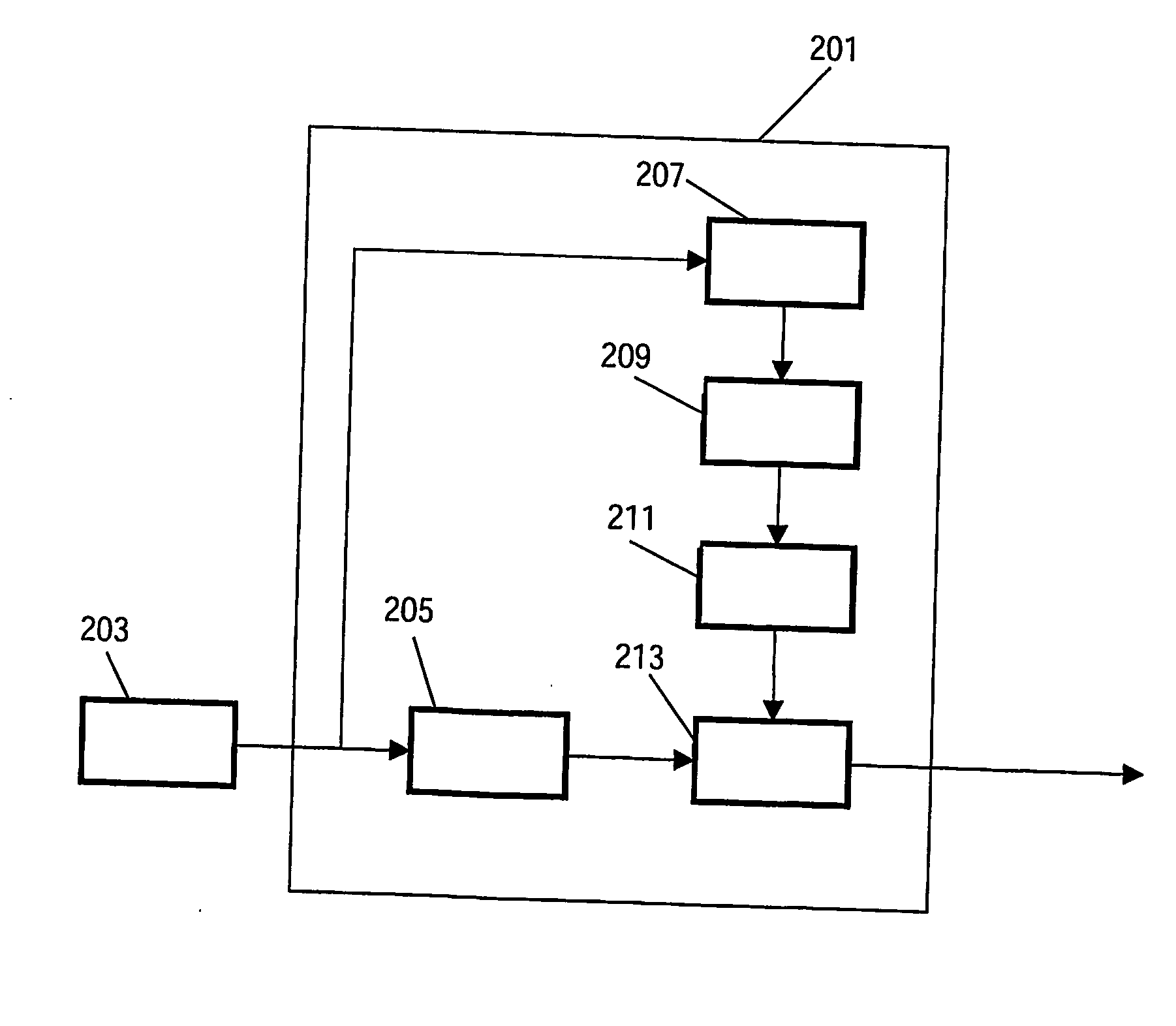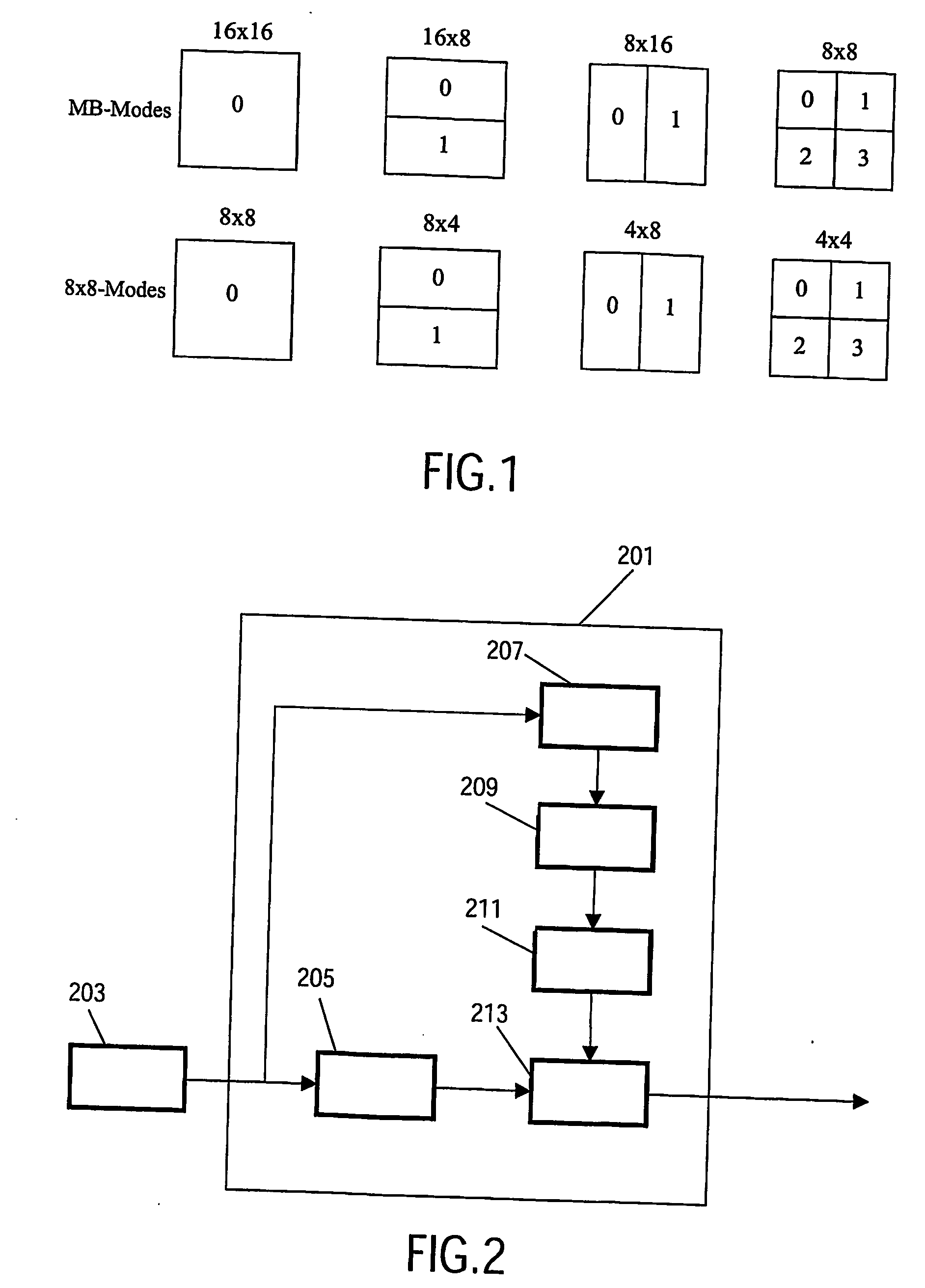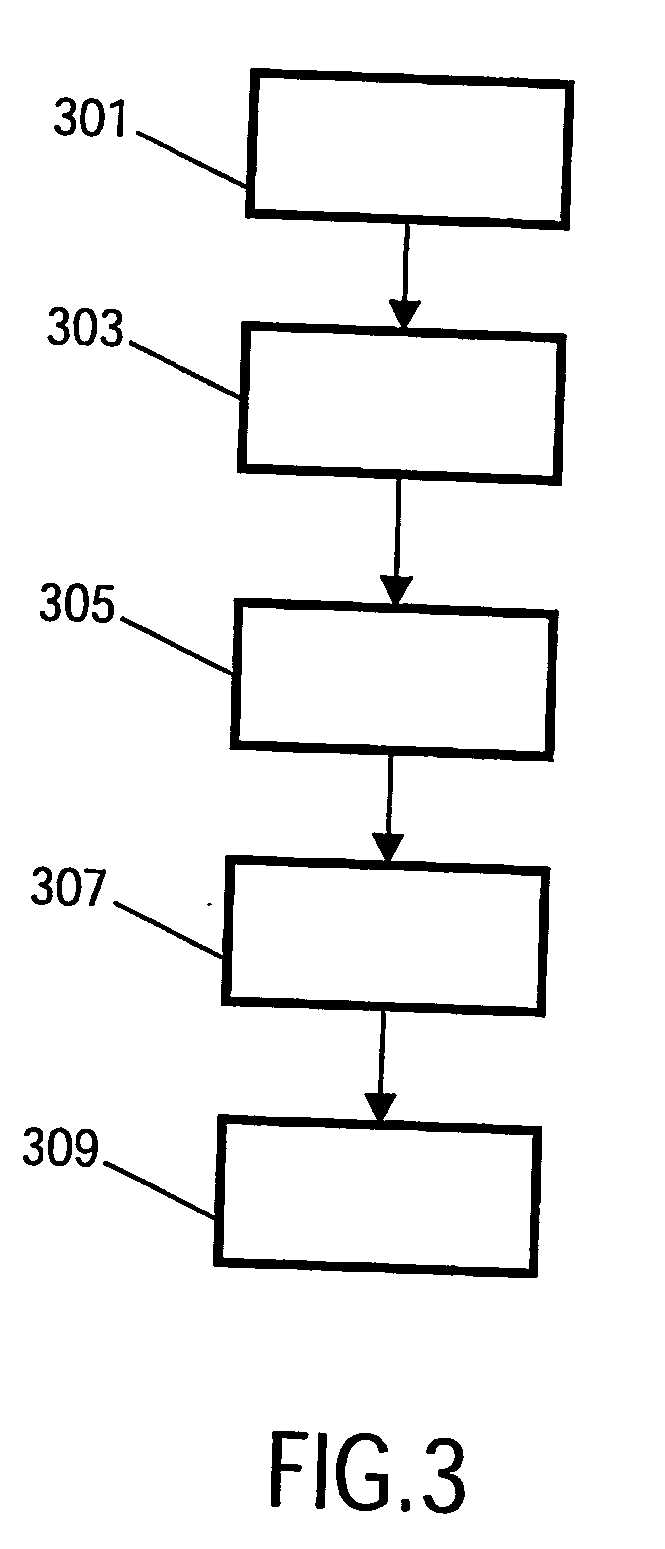Video encoding
a video encoder and video encoding technology, applied in the field of video encoders and video encoding methods, can solve the problems of reducing the potential of h.26l in a broad range of applications, the optimal or suitable selection of coding parameters, and the general decrease of h.26l, etc., to achieve the effect of reducing, alleviating or eliminating one or mor
- Summary
- Abstract
- Description
- Claims
- Application Information
AI Technical Summary
Benefits of technology
Problems solved by technology
Method used
Image
Examples
Embodiment Construction
[0037] The following description focuses on an embodiment of the invention applicable to video encoding in accordance with the H.26L, H.264 or MPEG-4 AVC video encoding standards. However, it will be appreciated that the invention is not limited to this application but may be applied to many other video encoding algorithms, specifications or standards.
[0038] Most established video coding standards (e.g. MPEG-2) inherently use block-based motion compensation as a practical method of exploiting correlation between subsequent pictures in video. This method attempts to predict each macro-block (16×16 pixels) in a certain picture by its “best match” in an adjacent reference picture. If the pixel-wise difference between a macro-block and its prediction is small enough, this difference is encoded rather than the macro-block itself. The relative displacement of the prediction block with respect to the coordinates of the actual macro-block is indicated by a motion vector, which is coded sep...
PUM
 Login to View More
Login to View More Abstract
Description
Claims
Application Information
 Login to View More
Login to View More - R&D
- Intellectual Property
- Life Sciences
- Materials
- Tech Scout
- Unparalleled Data Quality
- Higher Quality Content
- 60% Fewer Hallucinations
Browse by: Latest US Patents, China's latest patents, Technical Efficacy Thesaurus, Application Domain, Technology Topic, Popular Technical Reports.
© 2025 PatSnap. All rights reserved.Legal|Privacy policy|Modern Slavery Act Transparency Statement|Sitemap|About US| Contact US: help@patsnap.com



